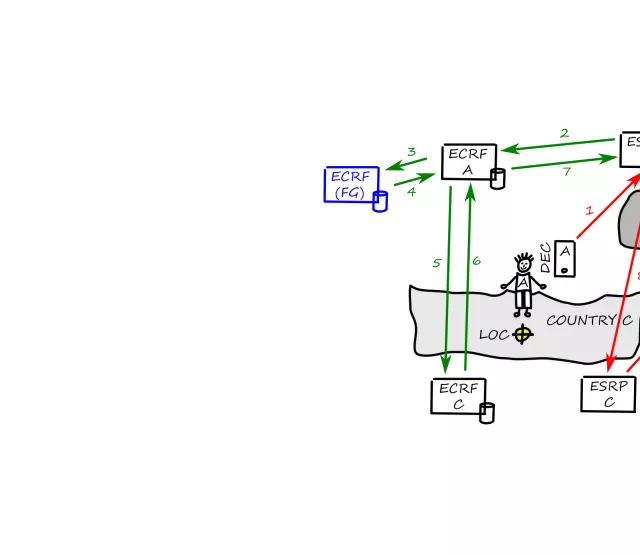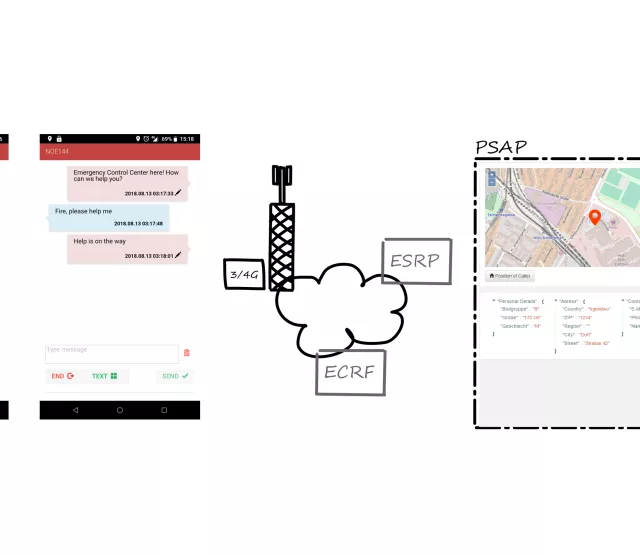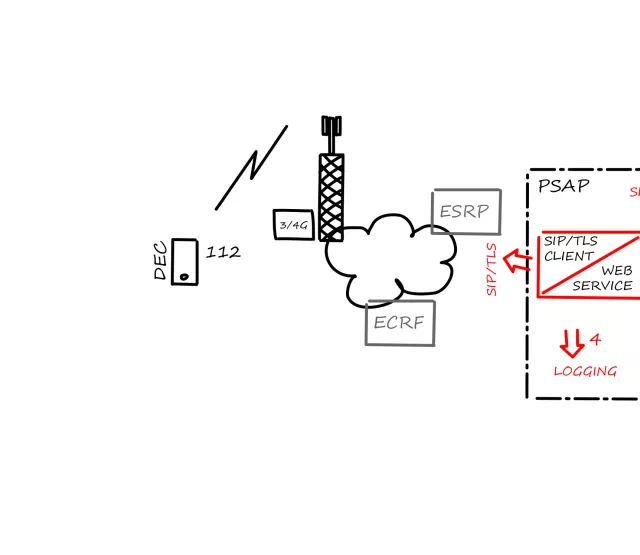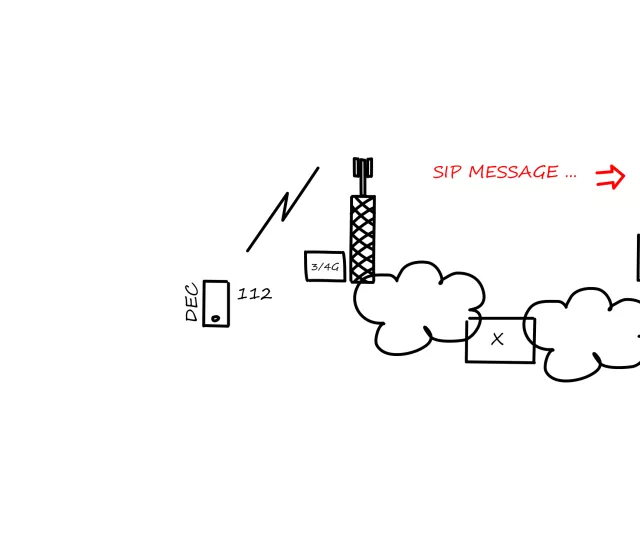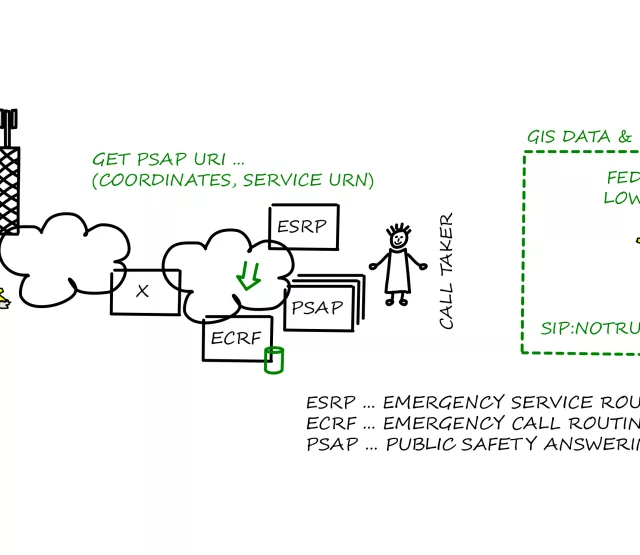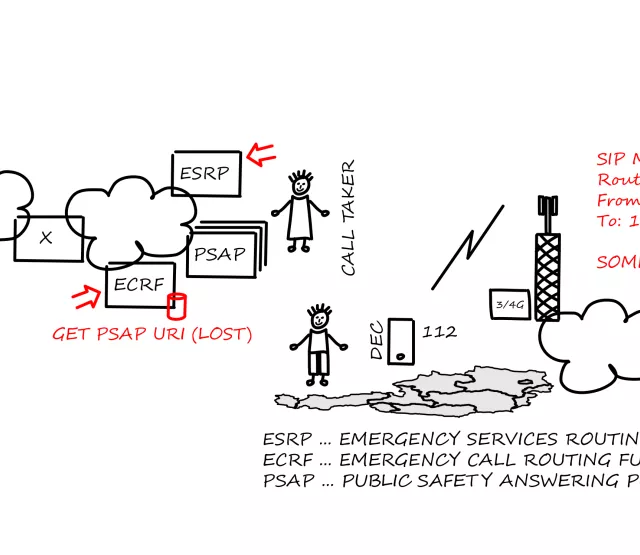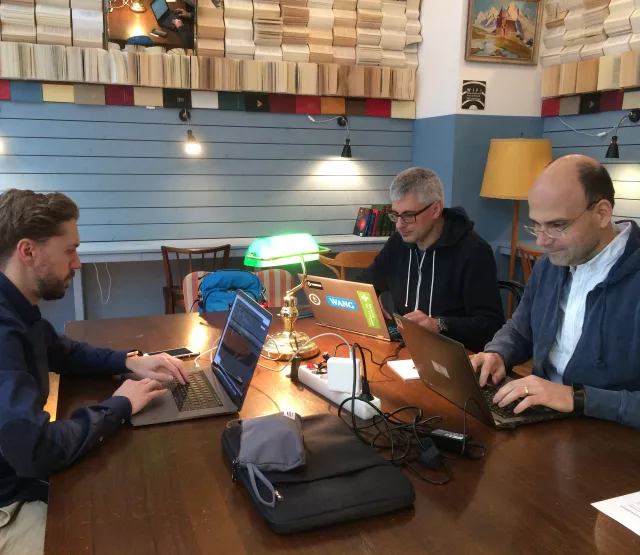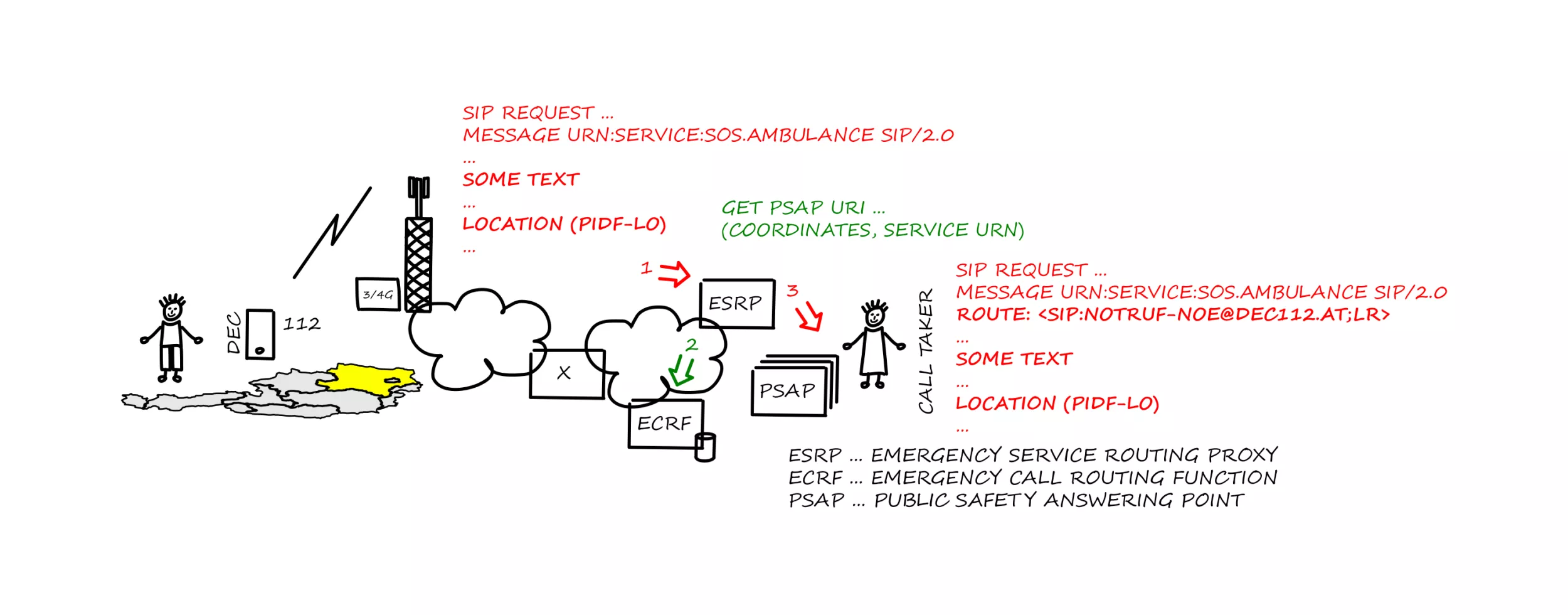
Förderjahr 2017 / Project Call #12 / ProjektID: 2347 / Projekt: DEC112
Defined as functional element of the NG112 architecture, an ESRP (Emergency Service Routing Proxy) is a SIP proxy that selects the next hop routing based on location, service URN and policy.
Next generation emergency call services shall support among other important features, like location being delivered with the call, different types of media. This assumes a signalling plane supports session management for media types like audio, video, messaging and real-time texting. A well-known and widely adopted protocol providing such capabilities is the Session Initiation protocol (SIP). Therefore, SIP plays also a key role in the context of NG112 standardization and, of course, is being used in DEC112.
As described in RFC 3621 - SIP makes use of elements, called proxy servers (SIP Proxy) "to route requests to the user's current location, authenticate and authorize users for services, implement provider call-routing policies, and provide features to users". A user’s location is better described as the current IP address of the user’s SIP end device and thus depending on the network it is connected to.
Assuming a single, countrywide PSAP that receives emergency calls via a single number (e.g. 112, 999, or 911), routing of SIP based emergency calls may be that simple – a SIP proxy would know about the whereabout of calling and called parties and simply forward incoming calls or messages. But, as mentioned in previous posts, an emergency center or PSAP (Public Safety Answering Point) may serve a certain region (jurisdiction) and countries may operate unique emergency numbers per agency (e.g. ambulance, fire and police). That is the case in Austria – in general, Austrian federal states are responsible for emergency services and, depending on the organization of agencies, PSAP jurisdiction areas are either the territory of the federal state or counties.
Such an environment requires, let’s say, extended features supported by a SIP Proxy and the aggregate of such extended features paired with the basic features of a SIP proxy are known as Emergency Service Routing Proxy (ESRP). Main features among others are:
- the support of service URNs, in order to uniquely identify the service requested by a calling party, e.g. urn:service:sos, urn:service:sos.ambulance, urn:service:sos.fire …
- parsing a received location object or de-referencing location via a location information server (HELD protocol, RFC 5985)
- creating a request to be sent to the ECRF to query routing information based on a location and a service URN (LoST protocol – RFC5222)
- allowing downstream elements to indicate their readiness to receive emergency calls via a specific de-queue registration interface
DEC112 implements an ESRP as open source (based on Kamailio – www.kamailio.org) and hosts a redundant ESRP service to run an Austrian pilot. More on this later!


